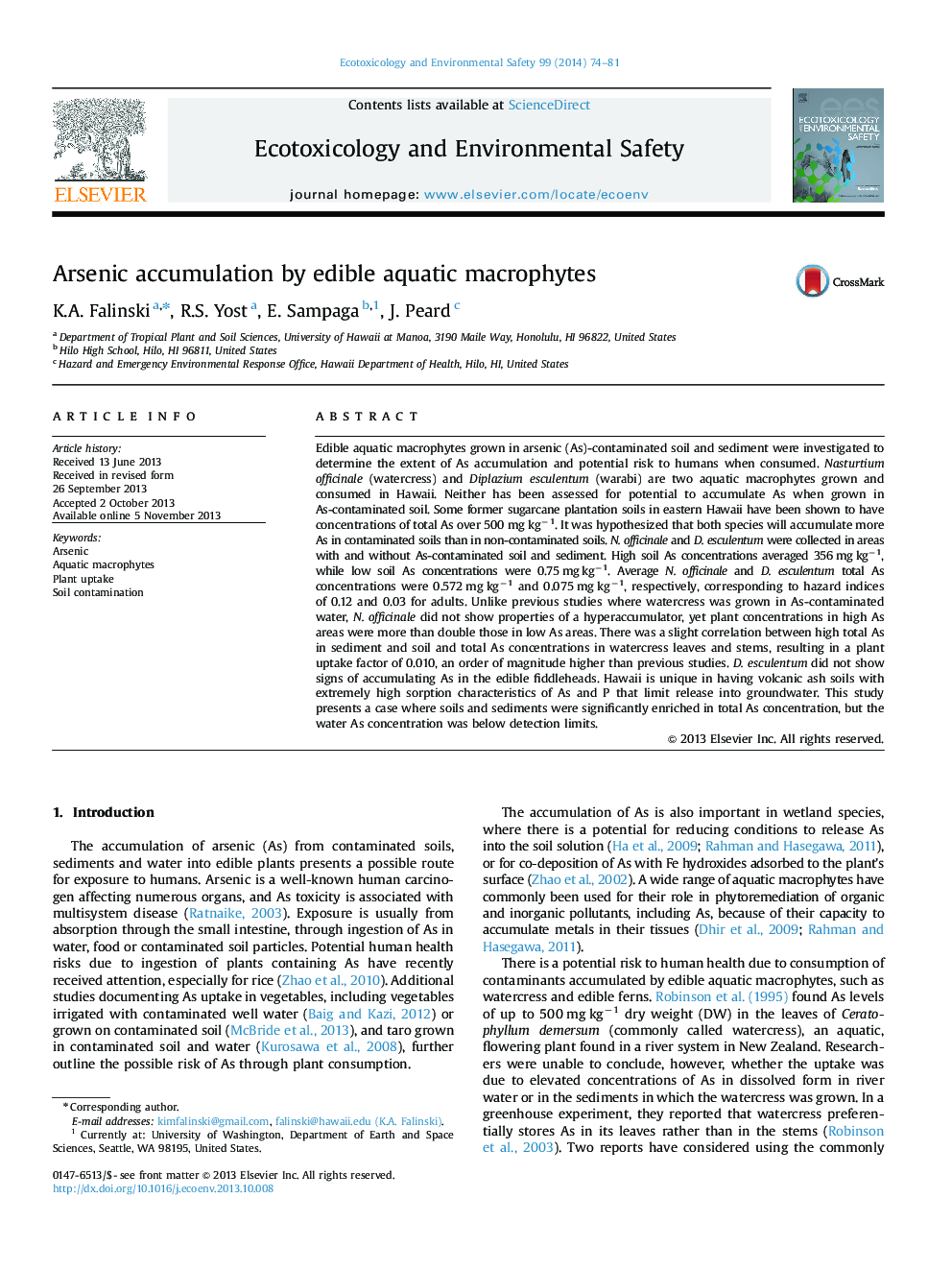| کد مقاله | کد نشریه | سال انتشار | مقاله انگلیسی | نسخه تمام متن |
|---|---|---|---|---|
| 4420251 | 1618964 | 2014 | 8 صفحه PDF | دانلود رایگان |
• Arsenic (As) uptake from contaminated soils by edible aquatic macrophytes, in the absence of As contaminated water, was investigated.
• In the Hilo areas investigated, the discovery of high As concentrations in soil was limited to a small wilderness area.
• Sediments in freshwater springs contained significantly less As than did the surrounding soils.
• Watercress (Nasturtium officinale) grown next to high As soils accumulated 275% more As than watercress grown next to below low As soils.
• The edible fern, Diplazium esculentum, did not accumulate As.
Edible aquatic macrophytes grown in arsenic (As)-contaminated soil and sediment were investigated to determine the extent of As accumulation and potential risk to humans when consumed. Nasturtium officinale (watercress) and Diplazium esculentum (warabi) are two aquatic macrophytes grown and consumed in Hawaii. Neither has been assessed for potential to accumulate As when grown in As-contaminated soil. Some former sugarcane plantation soils in eastern Hawaii have been shown to have concentrations of total As over 500 mg kg−1. It was hypothesized that both species will accumulate more As in contaminated soils than in non-contaminated soils. N. officinale and D. esculentum were collected in areas with and without As-contaminated soil and sediment. High soil As concentrations averaged 356 mg kg−1, while low soil As concentrations were 0.75 mg kg−1. Average N. officinale and D. esculentum total As concentrations were 0.572 mg kg−1 and 0.075 mg kg−1, respectively, corresponding to hazard indices of 0.12 and 0.03 for adults. Unlike previous studies where watercress was grown in As-contaminated water, N. officinale did not show properties of a hyperaccumulator, yet plant concentrations in high As areas were more than double those in low As areas. There was a slight correlation between high total As in sediment and soil and total As concentrations in watercress leaves and stems, resulting in a plant uptake factor of 0.010, an order of magnitude higher than previous studies. D. esculentum did not show signs of accumulating As in the edible fiddleheads. Hawaii is unique in having volcanic ash soils with extremely high sorption characteristics of As and P that limit release into groundwater. This study presents a case where soils and sediments were significantly enriched in total As concentration, but the water As concentration was below detection limits.
Journal: Ecotoxicology and Environmental Safety - Volume 99, January 2014, Pages 74–81
